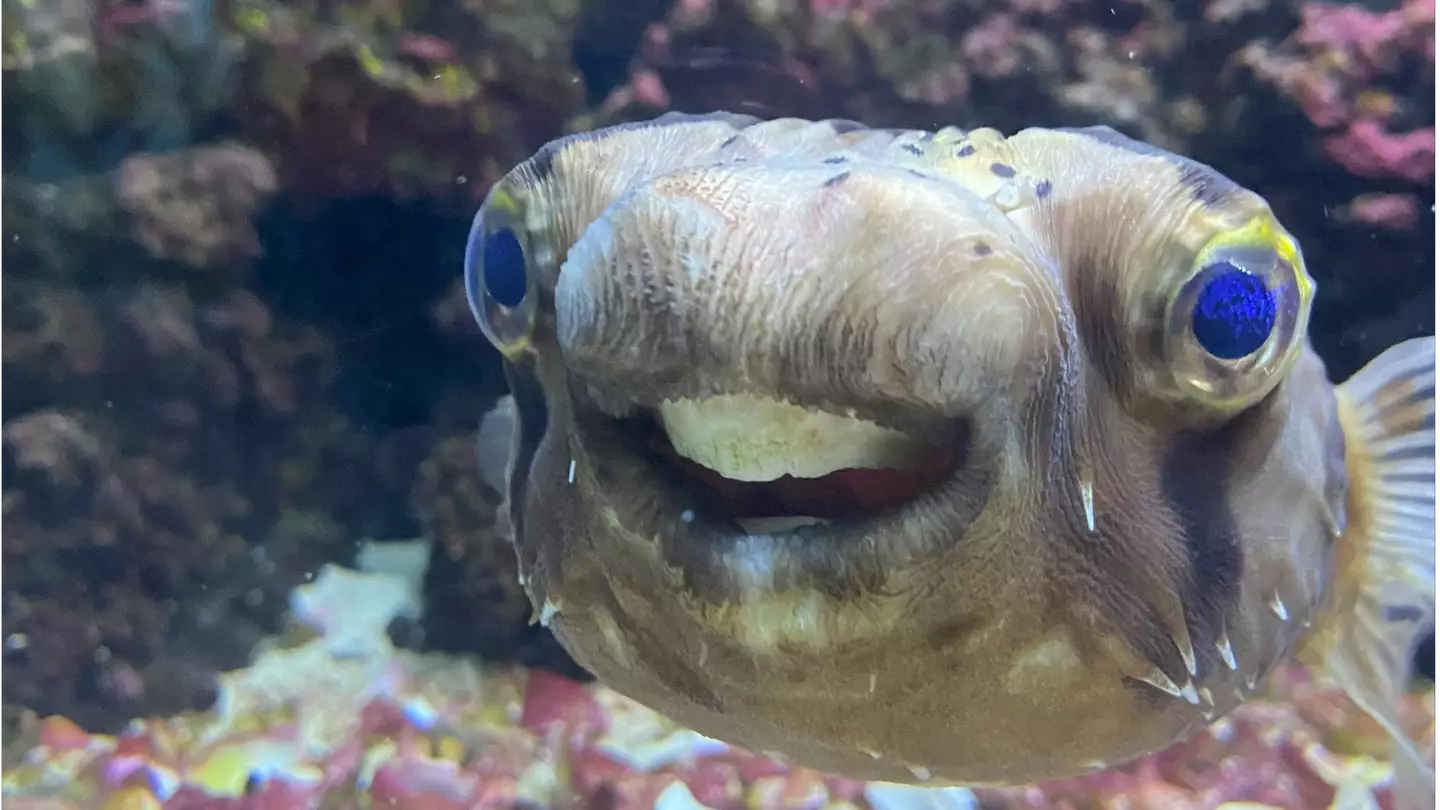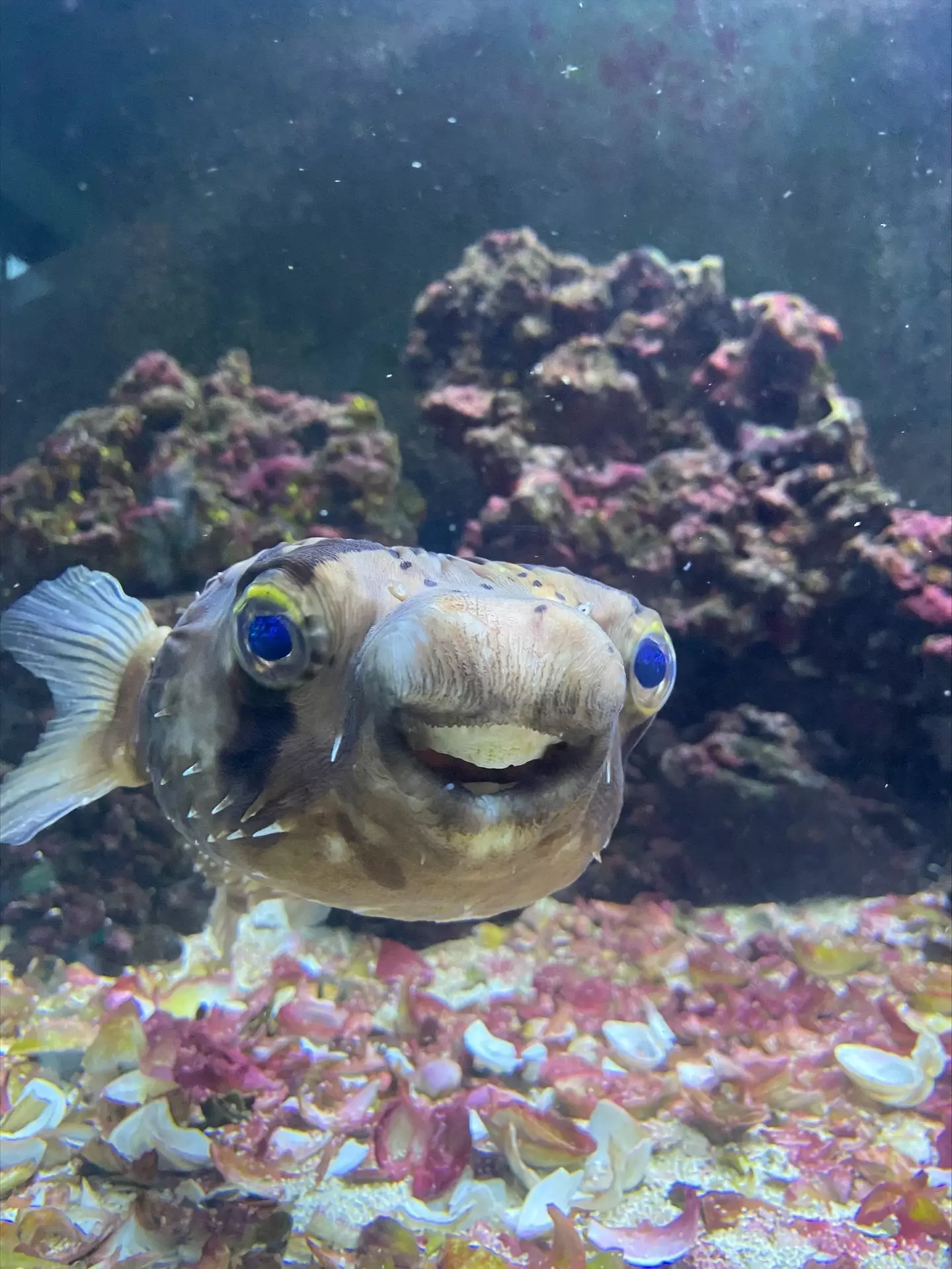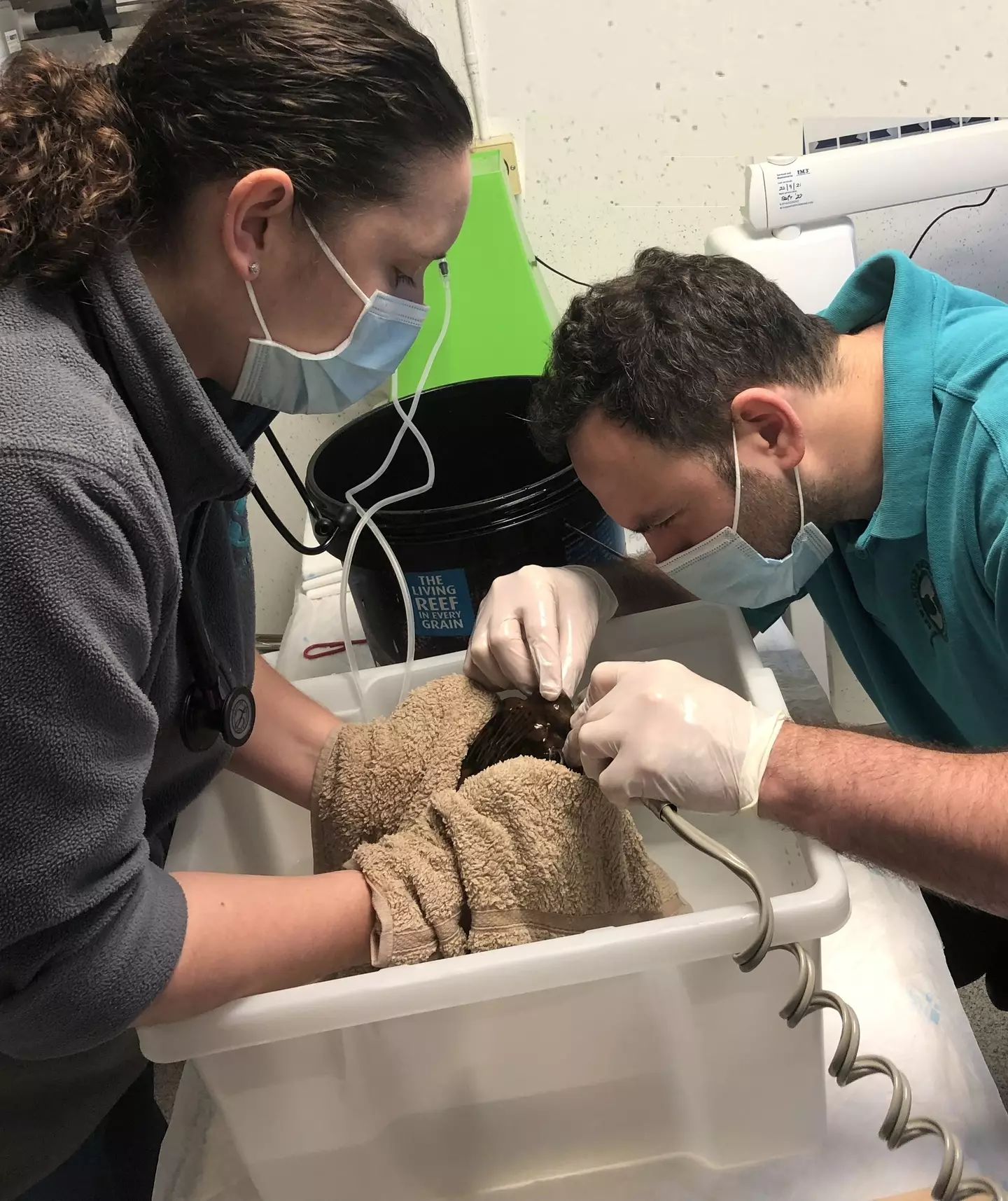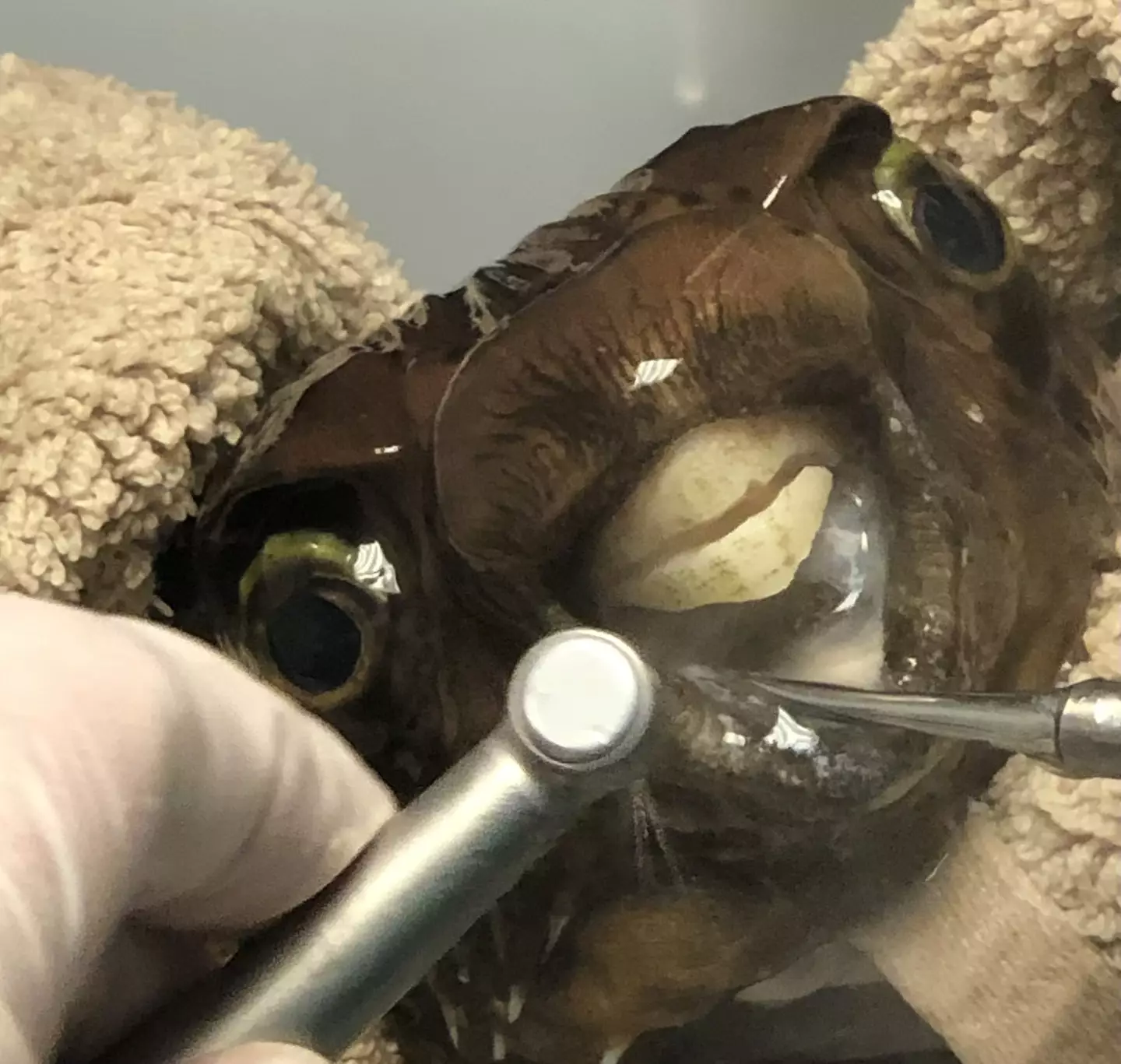
A pufferfish had to undergo some emergency dentistry after her teeth became so big she was unable to eat. You can see a clip of the fish having her dental work done here:
Mark Byatt, 64, began to grow concerned for Goldie the porcupine pufferfish after noticing that she was losing weight as her large teeth prevented her from eating properly.
Byatt took the five-year-old fish to Sandhole Veterinary Centre in Snodland, Kent, where vets were able to sedate her using a water bowl filled with a mild anaesthetic solution, so they could get to work - cutting off one inch from her teeth.
Vet Daniel Calvo Carrasco said: “Porcupine pufferfish teeth are known as beaks and grow continuously throughout their lives.

“They’re usually kept short naturally, as they’re worn down on their regular diet of hard-shelled foods but, while these foods are provided in her home environment, she is not as forthcoming in eating them as her other tank mates.
“As a result, her upper beak grew to the point where it was hindering her ability to eat effectively.
“Goldie was brought into the practice in a large watertight container containing water from her home tank and a licensed fish anaesthetic was placed into the water until she achieved a light plane of anaesthesia.
“To support her further, the water was oxygenated throughout.

“This meant she was still breathing nicely throughout but was able to be held for brief periods out of the water without becoming too stressed.”
Vet nurse Debbie Addison used to a damp towel to prevent Goldie from drying or from kicking off her defence mechanism that would see her balloon to twice her usual size.
Daniel added: “Debbie was able to hold Goldie in a damp towel to prevent her becoming too dry, while also ensuring she was protected if she did trigger her defence mechanism to inflate her body and activate her spines.
“It was during those brief periods out of the anaesthetic water that I was able to use a dental burr to cut through her upper beak and reduce its length by half.

“Once the procedure had been completed, Goldie was placed into a second large container with water from her home tank to recover from the anaesthetic.
“She responded well. Within five minutes, she was able to stay up right in the water and within ten minutes she was back to happily swimming around.
“The whole procedure went swimmingly and was conducted in under an hour without any stress at all and Goldie was back home and eating well within two hours.”
Goldie is now back home in her tank, much to the relief of her owner.
He said: “About three months ago, we noticed her front beak was growing very quickly even though she was eating cockle in shell every day.

“We aren’t sure why Goldie’s teeth never really managed to grind themselves naturally but we knew we needed to get them filed, although we were unsure about how to achieve this.
“I was also very concerned about the process of getting Goldie to the surgery, as transporting large tropical fish is not without risk.
"We're just thrilled to have Goldie back home. She is thriving back in her tank and none the worse for her visit to the dentist."
Featured Image Credit: SWNS